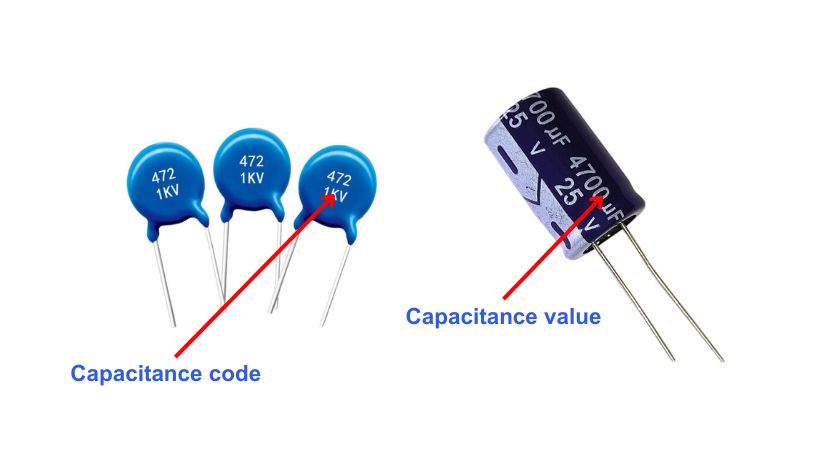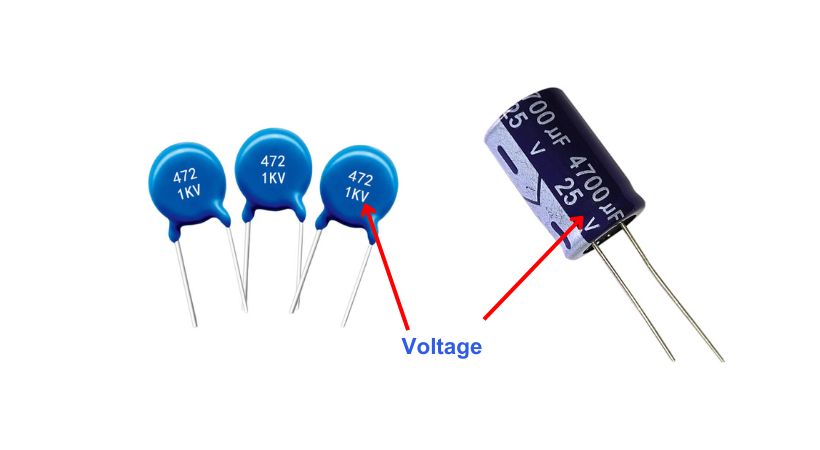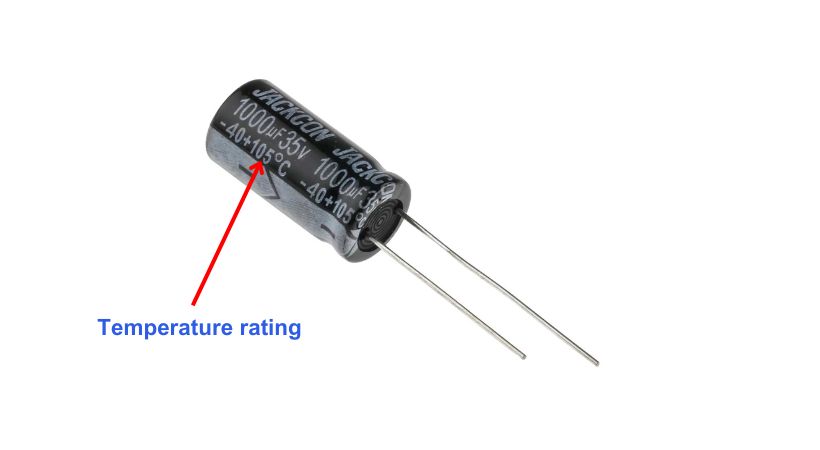Capacitor ratings understanding (Beginners guide, 2025)
By capacitor ratings, we mean the performance characteristics and limitations of a capacitor. They help in selecting the appropriate capacitor for a given application.
The capacitor ratings include capacitance, voltage rating, temperature rating, and tolerance. Capacitance defines how much charge can a capacitor store and voltage rating means what range of voltage a capacitor can bear without damaging itself. The temperature rating specifies the range of temperatures within which the capacitor can operate reliably. To select the right capacitor for your project, you have to consider these ratings as a beginner.
In the article, we’ll learn more about capacitor ratings so you can understand it.
Understanding of capacitor rating
To make an informed decision when selecting a capacitor, beginners must understand the various ratings associated with this component.
If you want to learn about capacitor basics, see our article:
Let’s discuss capacitor ratings and their meanings to make your working with capacitors easier and more fun.
1. Capacitance
Capacitance is a fundamental capacitor rating and represents its ability to store electrical charge. It is denoted in farads (F), although the capacitance of the capacitors is in smaller units such as microfarads (μF), nanofarads (nF), or picofarads (pF).
The capacitor capacitance is mostly mentioned on the body of the capacitor or can have code written on it.

Check out our article on: How to read capacitor values?
The capacitance rating determines the amount of charge a capacitor can store for a given voltage. It indicates the capacitor’s ability to store energy and release it when needed.
A higher capacitance value means that the capacitor can store more charge, while a lower capacitance value indicates a smaller charge storage capacity.
The capacitance rating of a capacitor is crucial in determining its functioning when choosing one for a particular application.
The capacitor comes in a wide range of capacitance values and the desired capacitance value depends on the specific requirements of the circuit or system in which the capacitor will be used.
Select the capacitor with the right capacitance value for your application.
2. Voltage rating
Voltage rating is a crucial specification of a capacitor that indicates the maximum voltage the capacitor can safely withstand without experiencing failure or breakdown.

It is denoted by a voltage value (V) or WV (working voltage). Capacitors are designed to operate within a specific voltage range, and exceeding this range can lead to various issues, including capacitor failure, leakage, or even catastrophic failure.
For example, if the capacitor has a voltage rating of 12V and you apply a voltage of 15V, as you increase the maximum limit of voltage it will overload the capacitor and eventually, it will damage it.
When selecting a capacitor check its voltage rating as it will ensure the safe and reliable operation of the capacitor and help prevent potential damage or hazards associated with exceeding the voltage limits.
3. Temperature rating
The temperature rating means the range of temperature in which the capacitor performs accurately and reliably.

Capacitors are sensitive to temperature variations, and their performance can be affected by extremes of heat or cold. As a beginner, you have to consider this factor also when selecting a capacitor.
Select capacitors with appropriate temperature ratings to avoid capacitance variation, leakage, or failure.
4. Tolerance
A capacitor’s tolerance rating indicates the allowable variation of capacitance from its specified value. For instance, an actual capacitance of a capacitor with 10% tolerance and a nominal capacitance of 10 μF may vary between 9 μF to 11 μF.
To make sure that the capacitance is within the appropriate range for precise circuit performance, beginners need to be aware of the tolerance rating.
Consider the tolerance of a capacitor when selecting it.
Importance of capacitor rating
Understanding capacitor ratings is crucial for several reasons as a beginner. Let’s discuss the importance of capacitor ratings.
1. Right capacitor selection
Understanding the capacitor rating will help you select the right capacitor for your project. Capacitors come in different shapes, sizes, and ratings.
The rating of the capacitor tells the operating voltage and capacitance value allowing you to choose the right capacitor for your specific application.
If you select a capacitor that has less operating voltage and capacitance value than you need it will not operate.
Selecting the incorrect capacitor might result in instability, malfunctioning circuits, or even component failure.
To make sure the capacitor can satisfy the needs of the circuit, factors including temperature rating, voltage rating, tolerance, and capacitance must be taken into account.
2. Circuit performance and stability
In electronic circuits, capacitors are necessary for energy storage, filtering, decoupling, and timing.
The selection and rating of a capacitor can have a big impact on the stability and performance of a circuit.
For example, choosing a capacitor with a high leakage current in precision applications can create errors, while employing a capacitor with an insufficient voltage rating can result in breakdown or failure.
You can select capacitors for your circuits that will offer the best performance and stability if you are aware of the ratings.
3. Safety consideration
Electrical energy can be stored in capacitors and released even after the power source is cut off. Capacitors can cause electric shock and other safety hazards if not handled correctly.
The capacitor ratings and their understanding are essential for the safe operation of a capacitor. By choosing capacitors that are not appropriate for the maximum voltage in your circuits, you may prevent capacitor failure, the release of stored energy, and other possible risks.
Understanding the voltage rating helps you avoid making this mistake.
4. Avoiding component damage
The loss of valuable components can also be minimized due to an understanding of component rating.
Exceeding the voltage limit of the capacitor can lead to capacitor failure and it can also damage other components due to the spark.
By understanding the ratings of capacitors, you can ensure that you operate capacitors within safe limits, preventing premature failure and unnecessary expenses.
5. Troubleshooting and debugging
While constructing electronic circuits, you could run across problems or strange behavior.
By being aware of capacitor ratings, you may assess the possible effects of capacitors on circuit performance and determine whether the choice of capacitors is making things worse.
It makes it possible for you to debug and troubleshoot your circuits more successfully.
6. Learning electronics concepts
The capacitor ratings will also help in learning basic electronics concepts as the ratings define the characteristic behavior and specifications of a component.
You gain a deeper understanding of the behavior and characteristics of capacitors, as well as the underlying principles of energy storage and electrical properties.
This knowledge forms a foundation for further learning and advancement in electronics.
Conclusion
Studying and understanding capacitor ratings is essential for the functionality and performance of the capacitor.
The rating of the capacitor defines the capacitor capacitance value, maximum operating voltage, operating temperature, and tolerance. All these ratings contribute to the performance of capacitor operation.
By grasping the significance of these ratings, beginners can confidently choose the right capacitors for their projects, ensuring optimal circuit performance, safety, and reliability.
With this understanding, beginners establish a solid foundation in electronics and open doors for additional research and education in the area.
This was all about the capacitor rating and I hope it will be helpful.
Thank you and have a blessed life.
Other useful posts:
